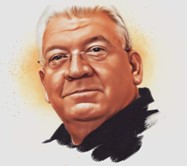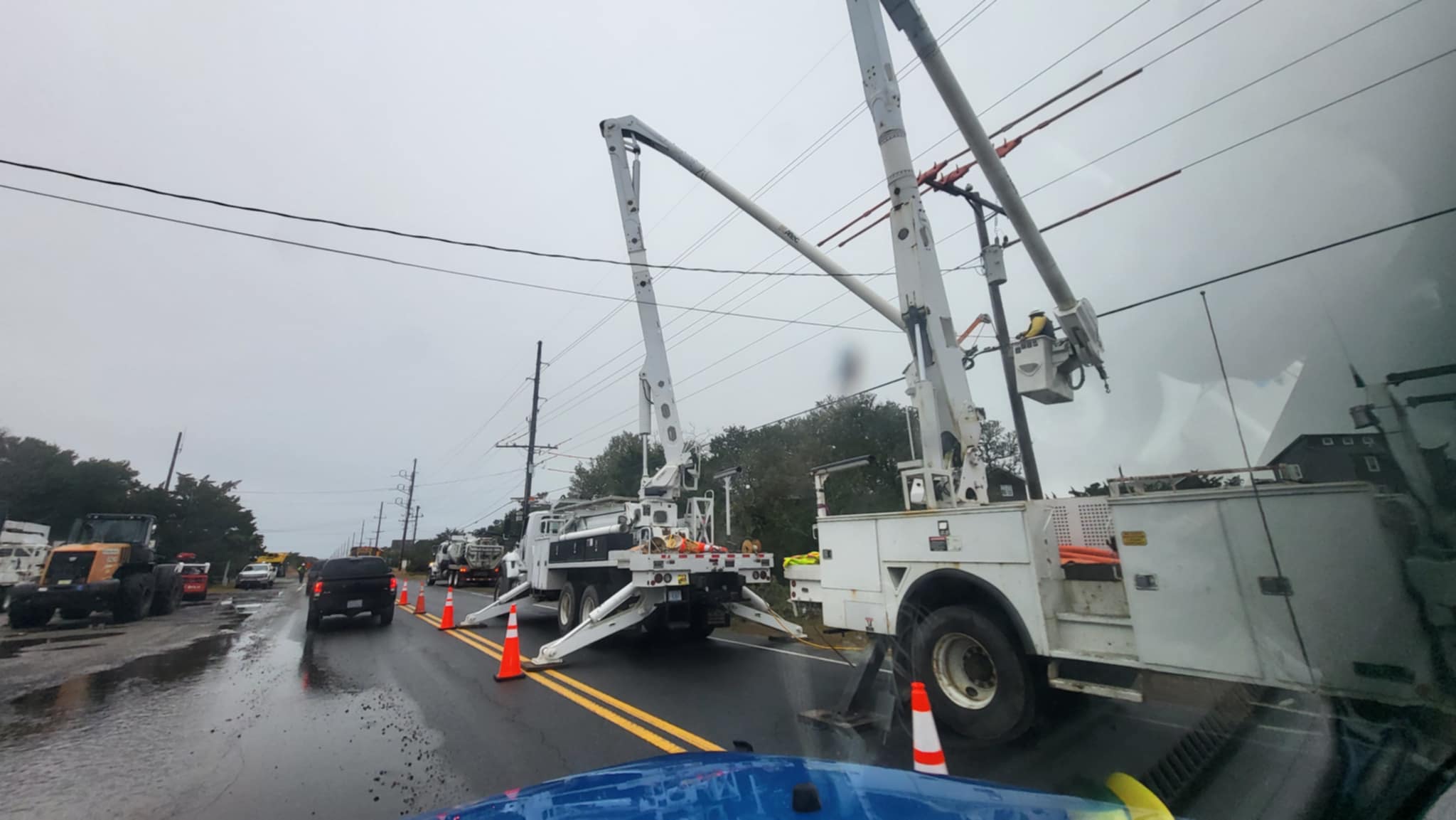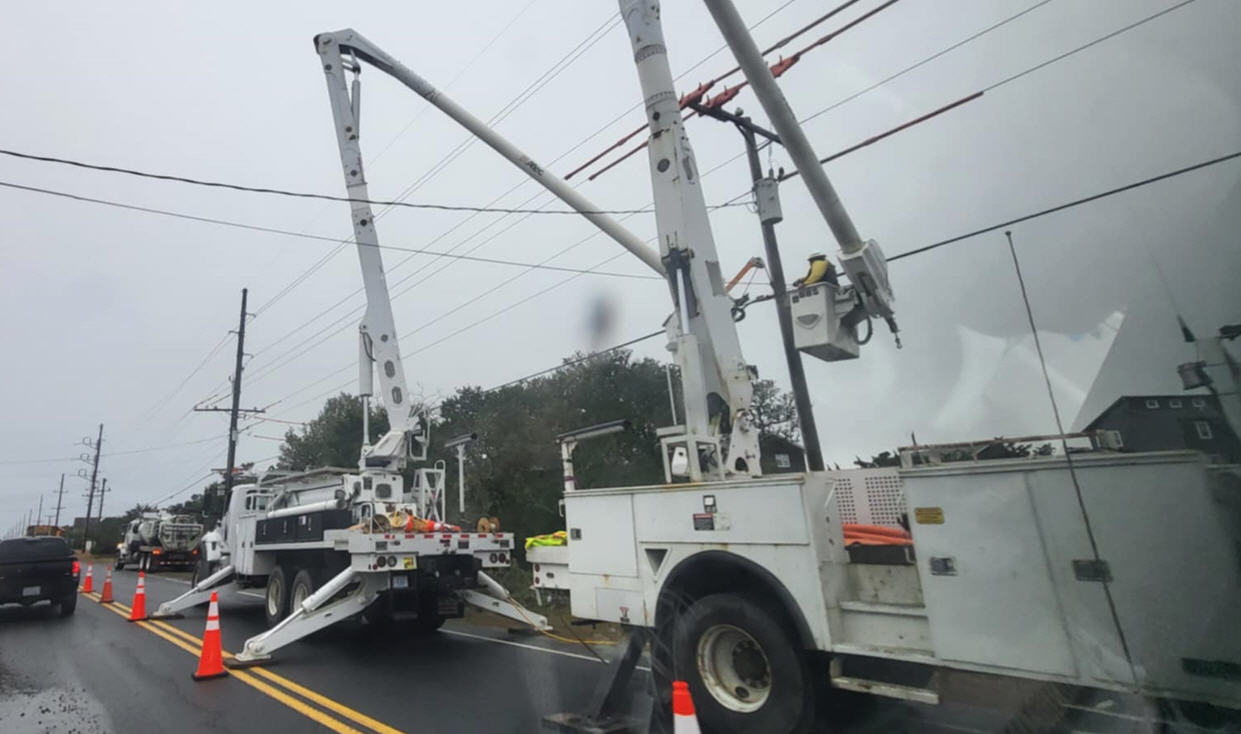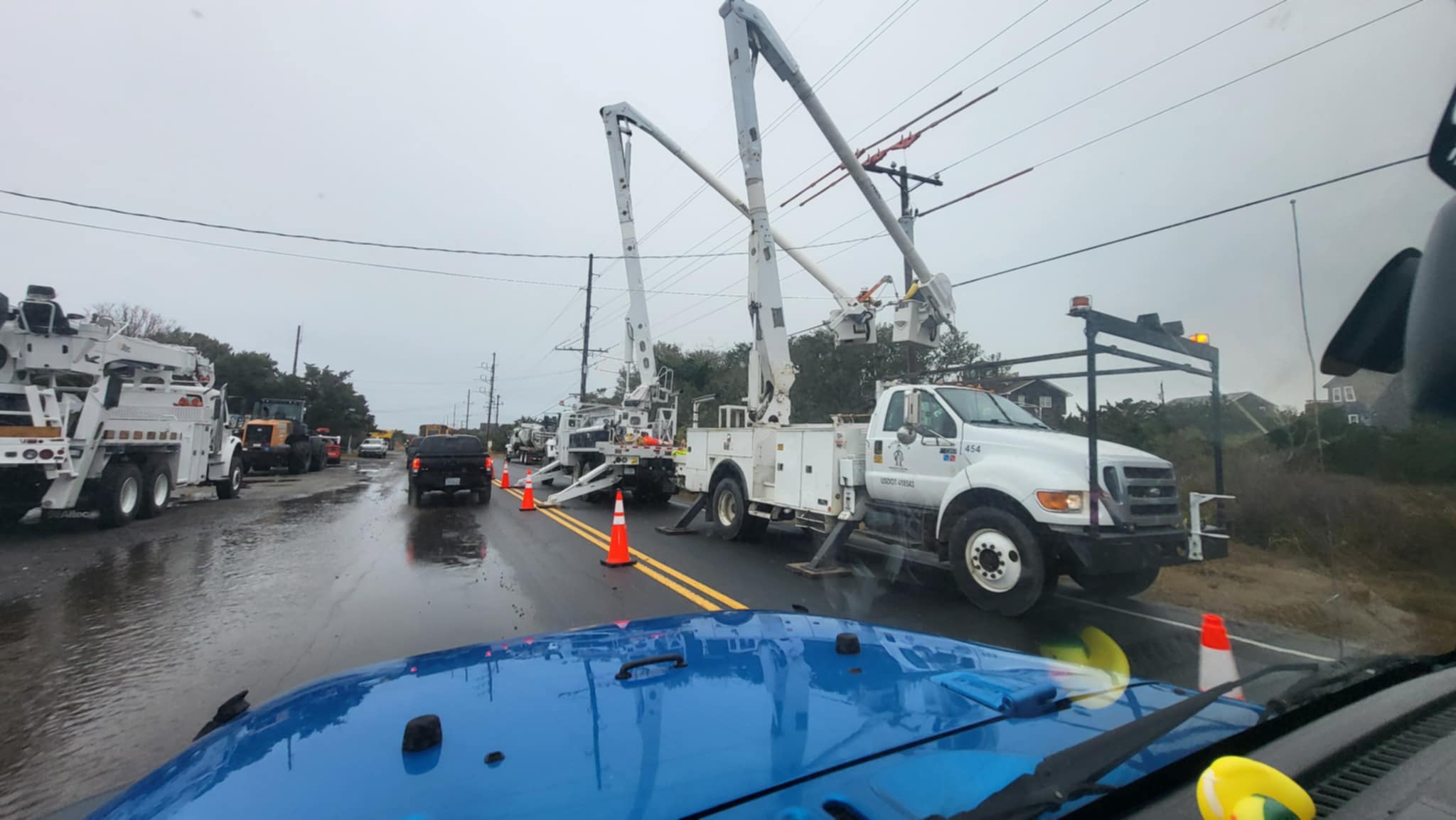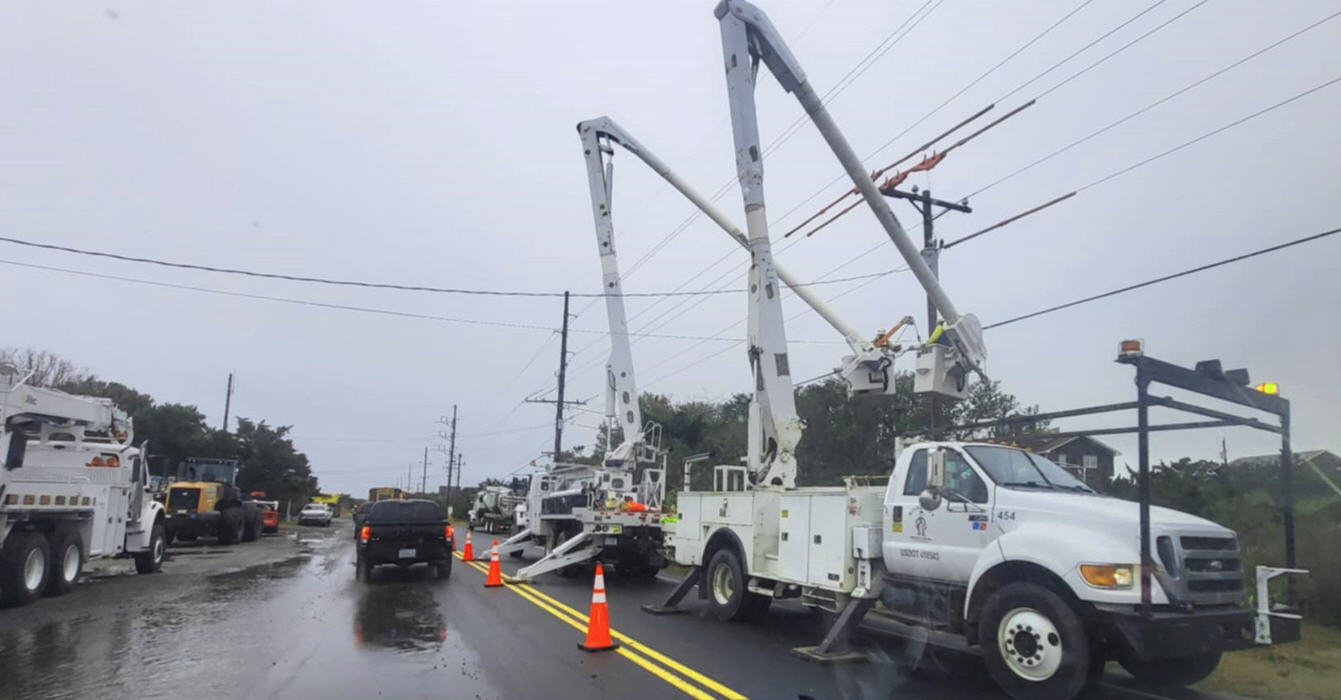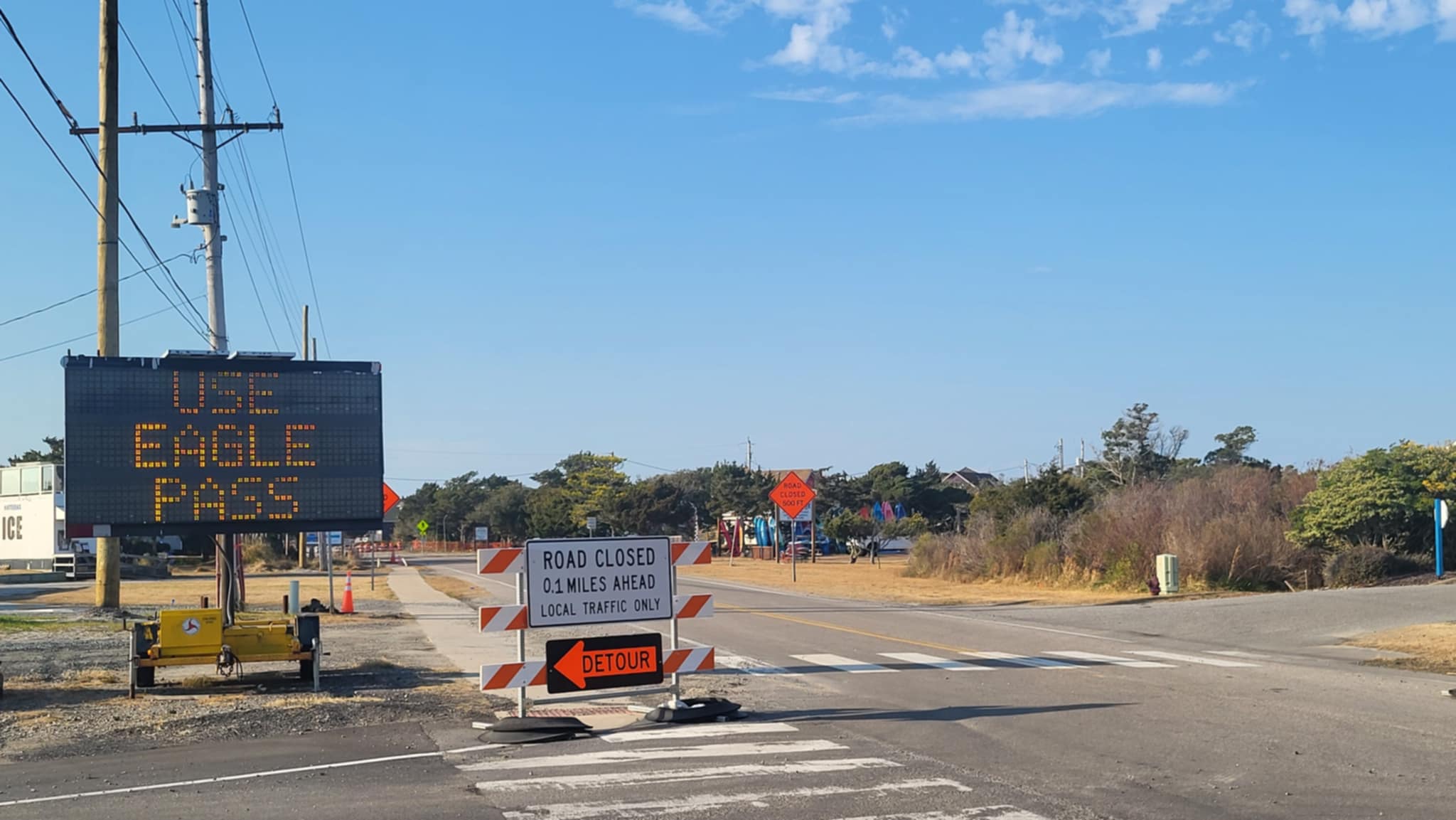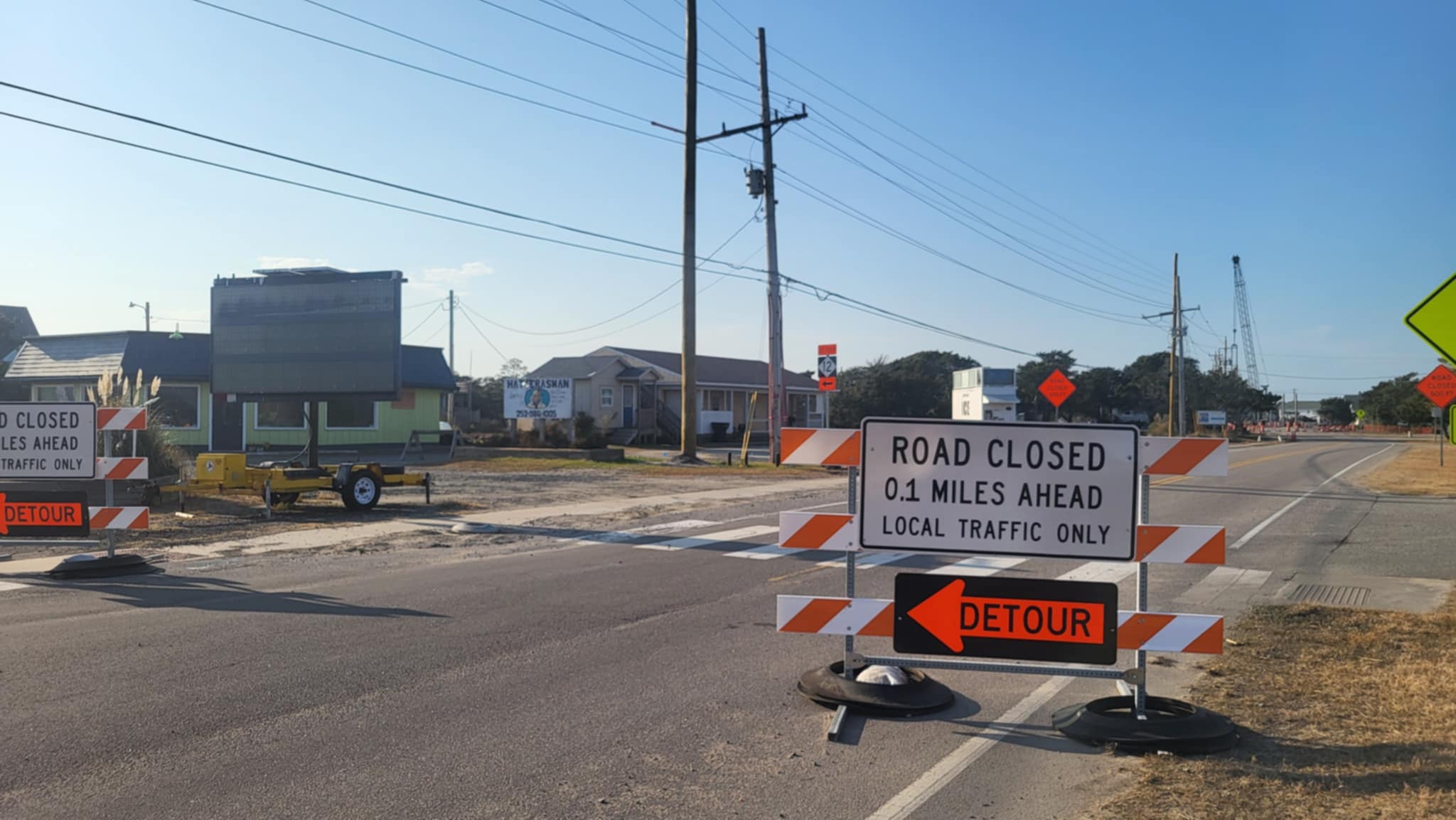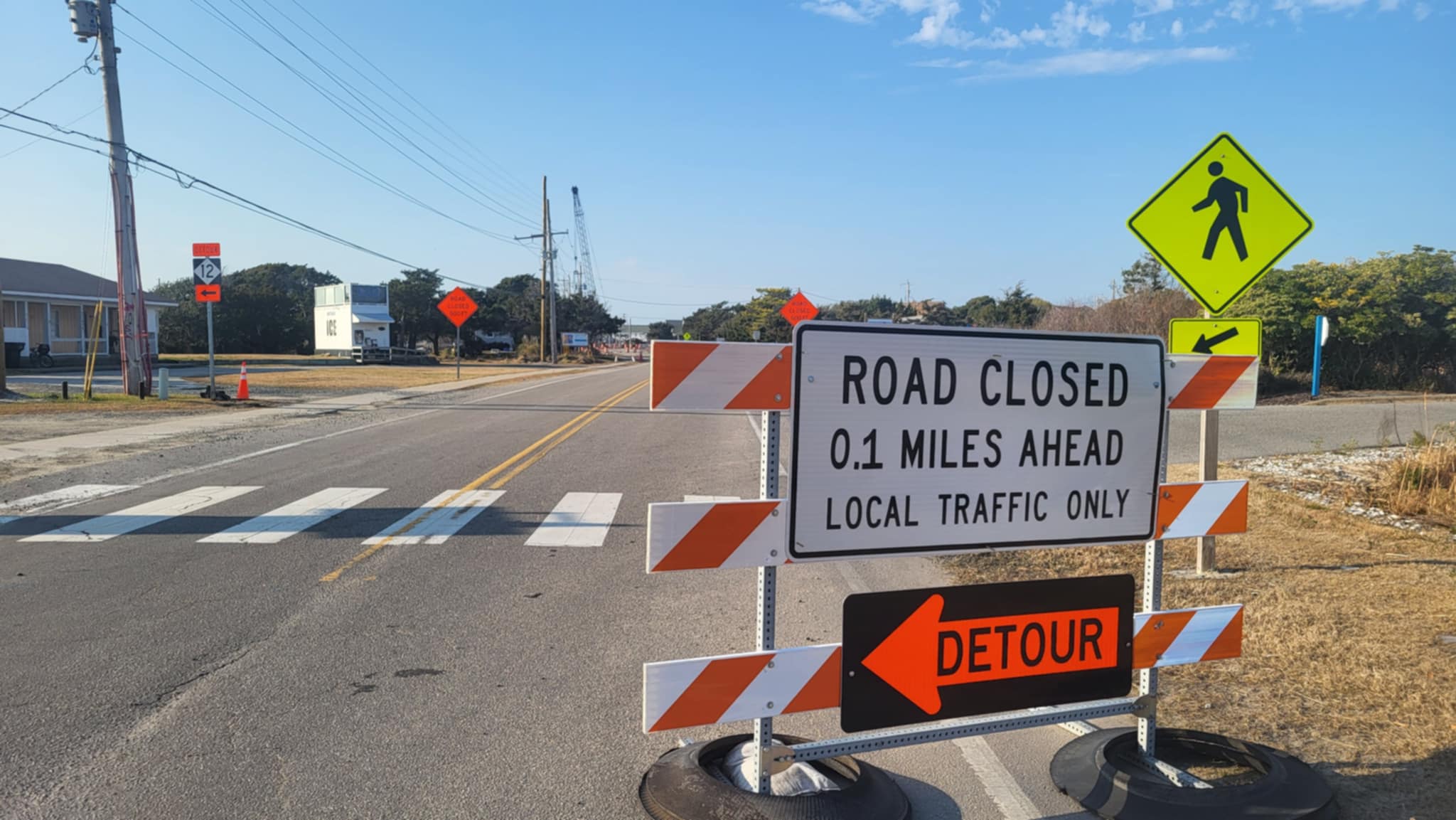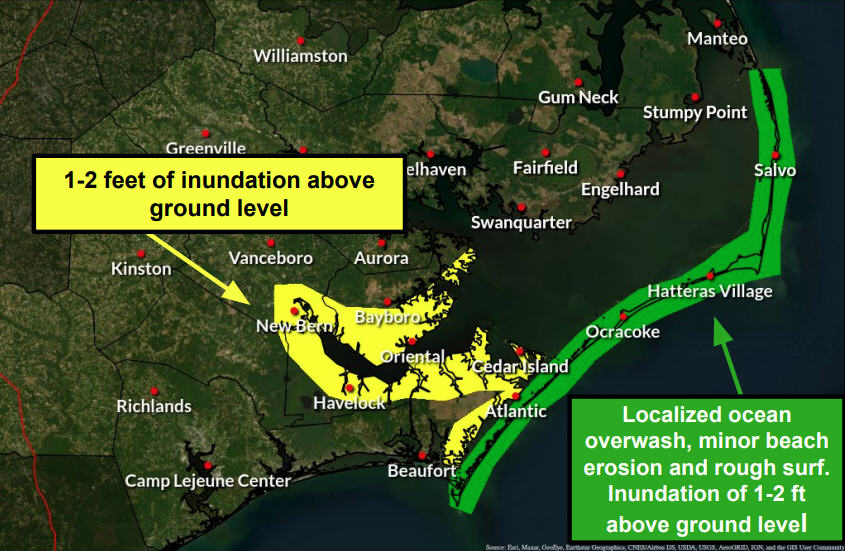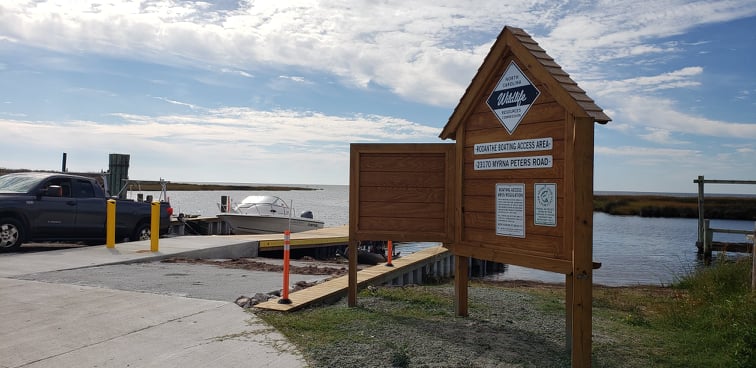Hatteras Civil War artifacts are on exhibit at Graveyard of the Atlantic Museum By JORDAN TOMBERLIN
Hatteras Civil War artifacts are on exhibit
at Graveyard of the Atlantic Museum
By JORDAN TOMBERLIN
By JORDAN TOMBERLIN
By JORDAN TOMBERLIN
As part of the commemoration of the events that happened 150 years ago on the Outer Banks during the Civil War, the Graveyard of the Atlantic Museum in Hatteras village is featuring an exhibit with artifacts from the Battle of Forts Clark and Hatteras and the “Chicamacomico Races.”
As part of the commemoration of the events that happened 150 years ago on the Outer Banks during the Civil War, the Graveyard of the Atlantic Museum in Hatteras village is featuring an exhibit with artifacts from the Battle of Forts Clark and Hatteras and the “Chicamacomico Races.”
As part of the commemoration of the events that happened 150 years ago on the Outer Banks during the Civil War, the Graveyard of the Atlantic Museum in Hatteras village is featuring an exhibit with artifacts from the Battle of Forts Clark and Hatteras and the “Chicamacomico Races.”
As part of the commemoration of the events that happened 150 years ago on the Outer Banks during the Civil War, the Graveyard of the Atlantic Museum in Hatteras village is featuring an exhibit with artifacts from the Battle of Forts Clark and Hatteras and the “Chicamacomico Races.”
The exhibit opened last August just before the Flags Over Hatteras Event that was cancelled because of Hurricane Irene. The event was rescheduled for April 26-29, and the exhibit will continue through the summer.
The exhibit opened last August just before the Flags Over Hatteras Event that was cancelled because of Hurricane Irene. The event was rescheduled for April 26-29, and the exhibit will continue through the summer.
The exhibit opened last August just before the Flags Over Hatteras Event that was cancelled because of Hurricane Irene. The event was rescheduled for April 26-29, and the exhibit will continue through the summer.
The exhibit opened last August just before the Flags Over Hatteras Event that was cancelled because of Hurricane Irene. The event was rescheduled for April 26-29, and the exhibit will continue through the summer.
According to museum director Joe Schwarzer, the idea for the exhibit came about a few years ago, as he and others were considering the best way to call attention to the historical events that took place on these islands at the outset of the war—events that he says are often overshadowed by those that followed and are largely ignored by the public, despite their significance.
According to museum director Joe Schwarzer, the idea for the exhibit came about a few years ago, as he and others were considering the best way to call attention to the historical events that took place on these islands at the outset of the war—events that he says are often overshadowed by those that followed and are largely ignored by the public, despite their significance.
According to museum director Joe Schwarzer, the idea for the exhibit came about a few years ago, as he and others were considering the best way to call attention to the historical events that took place on these islands at the outset of the war—events that he says are often overshadowed by those that followed and are largely ignored by the public, despite their significance.
According to museum director Joe Schwarzer, the idea for the exhibit came about a few years ago, as he and others were considering the best way to call attention to the historical events that took place on these islands at the outset of the war—events that he says are often overshadowed by those that followed and are largely ignored by the public, despite their significance.
There were many “firsts” and one “last” that came from these events: the first Union victory of the war; the first amphibious assault; the first time the Union used the “encirclement” tactic, completely surrounding a land target; the first credited instance of African Americans in action against the Confederates, and the last time a U.S. sailing vessel sailed as a warship in action.
This was the moment, Schwarzer said, when the Confederates lost control of the North Carolina coast, and it had disastrous effects on their war strategy.
There were many “firsts” and one “last” that came from these events: the first Union victory of the war; the first amphibious assault; the first time the Union used the “encirclement” tactic, completely surrounding a land target; the first credited instance of African Americans in action against the Confederates, and the last time a U.S. sailing vessel sailed as a warship in action.
This was the moment, Schwarzer said, when the Confederates lost control of the North Carolina coast, and it had disastrous effects on their war strategy.
There were many “firsts” and one “last” that came from these events: the first Union victory of the war; the first amphibious assault; the first time the Union used the “encirclement” tactic, completely surrounding a land target; the first credited instance of African Americans in action against the Confederates, and the last time a U.S. sailing vessel sailed as a warship in action.
This was the moment, Schwarzer said, when the Confederates lost control of the North Carolina coast, and it had disastrous effects on their war strategy.
There were many “firsts” and one “last” that came from these events: the first Union victory of the war; the first amphibious assault; the first time the Union used the “encirclement” tactic, completely surrounding a land target; the first credited instance of African Americans in action against the Confederates, and the last time a U.S. sailing vessel sailed as a warship in action.
This was the moment, Schwarzer said, when the Confederates lost control of the North Carolina coast, and it had disastrous effects on their war strategy.
Given the importance of these events and the proximity of Hatteras, Ocracoke, and Roanoke islands, Schwarzer and others wanted to ensure that the exhibit was built around objects and information that were specific to the actual events and their location.
Given the importance of these events and the proximity of Hatteras, Ocracoke, and Roanoke islands, Schwarzer and others wanted to ensure that the exhibit was built around objects and information that were specific to the actual events and their location.
Given the importance of these events and the proximity of Hatteras, Ocracoke, and Roanoke islands, Schwarzer and others wanted to ensure that the exhibit was built around objects and information that were specific to the actual events and their location.
Given the importance of these events and the proximity of Hatteras, Ocracoke, and Roanoke islands, Schwarzer and others wanted to ensure that the exhibit was built around objects and information that were specific to the actual events and their location.
According to Michael Carraway, Exhibits Curator for the North Carolina Maritime Museum System, he, Schwarzer, and others spent about three years researching the events that took place on Hatteras and Ocracoke—the action at Forts Clark and Hatteras and the Chicamacomico races during which Union and Confederate troops chased each other up and down Hatteras—and tracking down artifacts that were immediately relevant to them.
According to Michael Carraway, Exhibits Curator for the North Carolina Maritime Museum System, he, Schwarzer, and others spent about three years researching the events that took place on Hatteras and Ocracoke—the action at Forts Clark and Hatteras and the Chicamacomico races during which Union and Confederate troops chased each other up and down Hatteras—and tracking down artifacts that were immediately relevant to them.
According to Michael Carraway, Exhibits Curator for the North Carolina Maritime Museum System, he, Schwarzer, and others spent about three years researching the events that took place on Hatteras and Ocracoke—the action at Forts Clark and Hatteras and the Chicamacomico races during which Union and Confederate troops chased each other up and down Hatteras—and tracking down artifacts that were immediately relevant to them.
According to Michael Carraway, Exhibits Curator for the North Carolina Maritime Museum System, he, Schwarzer, and others spent about three years researching the events that took place on Hatteras and Ocracoke—the action at Forts Clark and Hatteras and the Chicamacomico races during which Union and Confederate troops chased each other up and down Hatteras—and tracking down artifacts that were immediately relevant to them.
And those are the artifacts that visitors to the exhibit will find.
And those are the artifacts that visitors to the exhibit will find.
And those are the artifacts that visitors to the exhibit will find.
And those are the artifacts that visitors to the exhibit will find.
There’s nothing “typical” about this exhibit—everything in it has significance to the historical events that took place on these islands in August of 1861 and the ensuing months.
There’s nothing “typical” about this exhibit—everything in it has significance to the historical events that took place on these islands in August of 1861 and the ensuing months.
There’s nothing “typical” about this exhibit—everything in it has significance to the historical events that took place on these islands in August of 1861 and the ensuing months.
There’s nothing “typical” about this exhibit—everything in it has significance to the historical events that took place on these islands in August of 1861 and the ensuing months.
“We’ve gone all over the country locating things that were actually here in August of 1861,” Schwarzer said. It won’t be a huge exhibit, he said, but what it will contain are artifacts that, 150 years ago, were actually on the islands.
“We’ve gone all over the country locating things that were actually here in August of 1861,” Schwarzer said. It won’t be a huge exhibit, he said, but what it will contain are artifacts that, 150 years ago, were actually on the islands.
“We’ve gone all over the country locating things that were actually here in August of 1861,” Schwarzer said. It won’t be a huge exhibit, he said, but what it will contain are artifacts that, 150 years ago, were actually on the islands.
“We’ve gone all over the country locating things that were actually here in August of 1861,” Schwarzer said. It won’t be a huge exhibit, he said, but what it will contain are artifacts that, 150 years ago, were actually on the islands.
For example, instead of uniforms typical of those worn during the Civil War, the exhibit will display actual uniforms worn by soldiers who were here during the bombardments, including one from the 9th New York Regiment and one that was created for an African American boy named York, who served as a kind of mascot (a flag bearer or drummer boy) for the 9th New York.
For example, instead of uniforms typical of those worn during the Civil War, the exhibit will display actual uniforms worn by soldiers who were here during the bombardments, including one from the 9th New York Regiment and one that was created for an African American boy named York, who served as a kind of mascot (a flag bearer or drummer boy) for the 9th New York.
For example, instead of uniforms typical of those worn during the Civil War, the exhibit will display actual uniforms worn by soldiers who were here during the bombardments, including one from the 9th New York Regiment and one that was created for an African American boy named York, who served as a kind of mascot (a flag bearer or drummer boy) for the 9th New York.
For example, instead of uniforms typical of those worn during the Civil War, the exhibit will display actual uniforms worn by soldiers who were here during the bombardments, including one from the 9th New York Regiment and one that was created for an African American boy named York, who served as a kind of mascot (a flag bearer or drummer boy) for the 9th New York.
And instead of photos of the USS Minnesota—a steam frigate and the flagship of the U.S. Navy, which was instrumental in the bombardment—the exhibit will feature the actual helm and bell of the ship, which Schwarzer and Carraway drove to Minnesota and retrieved from the Minnesota Historical Society.
And instead of photos of the USS Minnesota—a steam frigate and the flagship of the U.S. Navy, which was instrumental in the bombardment—the exhibit will feature the actual helm and bell of the ship, which Schwarzer and Carraway drove to Minnesota and retrieved from the Minnesota Historical Society.
And instead of photos of the USS Minnesota—a steam frigate and the flagship of the U.S. Navy, which was instrumental in the bombardment—the exhibit will feature the actual helm and bell of the ship, which Schwarzer and Carraway drove to Minnesota and retrieved from the Minnesota Historical Society.
And instead of photos of the USS Minnesota—a steam frigate and the flagship of the U.S. Navy, which was instrumental in the bombardment—the exhibit will feature the actual helm and bell of the ship, which Schwarzer and Carraway drove to Minnesota and retrieved from the Minnesota Historical Society.
In addition to the uniforms and remnants of the Minnesota, the exhibit will display flags from the various regiments that were present on the island during the bombardments; a drum from the 3rd Georgia Regiment, which was involved in the Chicamacomico Races; weapons that were used during the events, and facsimiles, etchings, and articles featured in the Harper’s Weekly and Frank Leslie news publications.
In addition to the uniforms and remnants of the Minnesota, the exhibit will display flags from the various regiments that were present on the island during the bombardments; a drum from the 3rd Georgia Regiment, which was involved in the Chicamacomico Races; weapons that were used during the events, and facsimiles, etchings, and articles featured in the Harper’s Weekly and Frank Leslie news publications.
In addition to the uniforms and remnants of the Minnesota, the exhibit will display flags from the various regiments that were present on the island during the bombardments; a drum from the 3rd Georgia Regiment, which was involved in the Chicamacomico Races; weapons that were used during the events, and facsimiles, etchings, and articles featured in the Harper’s Weekly and Frank Leslie news publications.
In addition to the uniforms and remnants of the Minnesota, the exhibit will display flags from the various regiments that were present on the island during the bombardments; a drum from the 3rd Georgia Regiment, which was involved in the Chicamacomico Races; weapons that were used during the events, and facsimiles, etchings, and articles featured in the Harper’s Weekly and Frank Leslie news publications.
Most of these artifacts are on loan from other museums, states, and private collectors, and will remain on display at the exhibit for the next year.
Most of these artifacts are on loan from other museums, states, and private collectors, and will remain on display at the exhibit for the next year.
Most of these artifacts are on loan from other museums, states, and private collectors, and will remain on display at the exhibit for the next year.
Most of these artifacts are on loan from other museums, states, and private collectors, and will remain on display at the exhibit for the next year.
Schwarzer said he would like to thank the Outer Banks Visitor’s Bureau, the Friends of the Graveyard of the Atlantic Museum, the Staff of the North Carolina Maritime Museum System, and the Outer Banks Community Foundation for making this exhibit possible.
The exhibit is free to the public. The exhibit will remain at the museum, which is located near the ferry docks in Hatteras village, until July 31, 2012. Museum hours are Monday through Saturday from 10 a.m. until 4 p.m. from April through October and Monday through Friday from 10 a.m. until 4 p.m. November through March. Admission to the museum is free, but a donation is accepted.
Schwarzer said he would like to thank the Outer Banks Visitor’s Bureau, the Friends of the Graveyard of the Atlantic Museum, the Staff of the North Carolina Maritime Museum System, and the Outer Banks Community Foundation for making this exhibit possible.
The exhibit is free to the public. The exhibit will remain at the museum, which is located near the ferry docks in Hatteras village, until July 31, 2012. Museum hours are Monday through Saturday from 10 a.m. until 4 p.m. from April through October and Monday through Friday from 10 a.m. until 4 p.m. November through March. Admission to the museum is free, but a donation is accepted.
Schwarzer said he would like to thank the Outer Banks Visitor’s Bureau, the Friends of the Graveyard of the Atlantic Museum, the Staff of the North Carolina Maritime Museum System, and the Outer Banks Community Foundation for making this exhibit possible.
The exhibit is free to the public. The exhibit will remain at the museum, which is located near the ferry docks in Hatteras village, until July 31, 2012. Museum hours are Monday through Saturday from 10 a.m. until 4 p.m. from April through October and Monday through Friday from 10 a.m. until 4 p.m. November through March. Admission to the museum is free, but a donation is accepted.
Schwarzer said he would like to thank the Outer Banks Visitor’s Bureau, the Friends of the Graveyard of the Atlantic Museum, the Staff of the North Carolina Maritime Museum System, and the Outer Banks Community Foundation for making this exhibit possible.
The exhibit is free to the public. The exhibit will remain at the museum, which is located near the ferry docks in Hatteras village, until July 31, 2012. Museum hours are Monday through Saturday from 10 a.m. until 4 p.m. from April through October and Monday through Friday from 10 a.m. until 4 p.m. November through March. Admission to the museum is free, but a donation is accepted.
Subject
Name
(required, will not be published)
(required, will not be published)
City :
State :
Your Comments:
May be posted on the Letters to the Editor page at the discretion of the editor.
May be posted on the Letters to the Editor page at the discretion of the editor.
May be posted on the Letters to the Editor page at the discretion of the editor.
May be posted on the Letters to the Editor page at the discretion of the editor.









